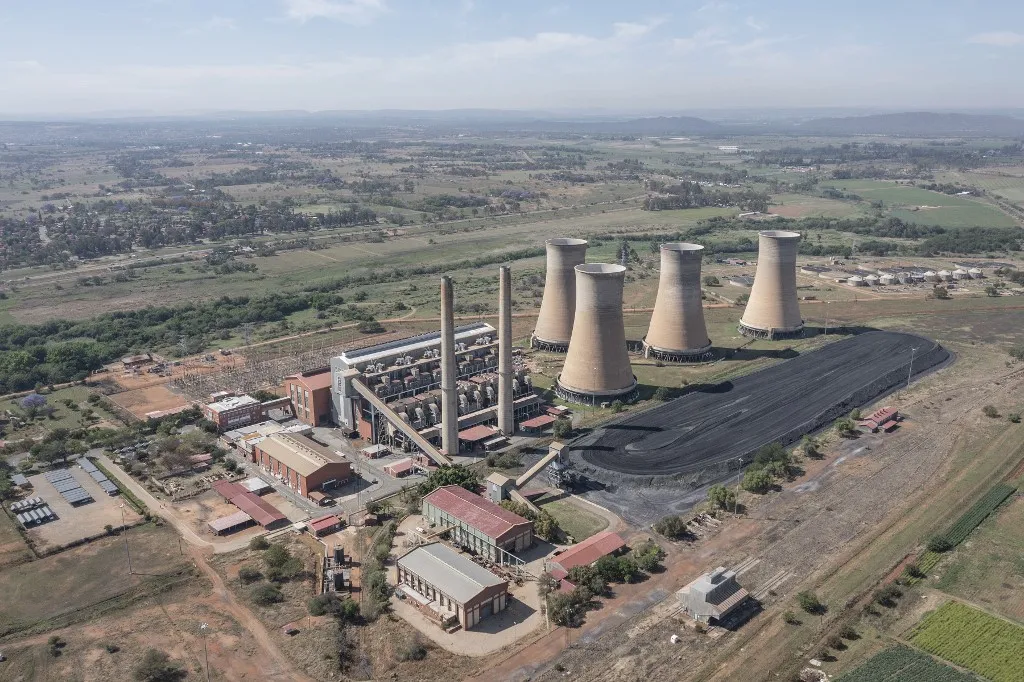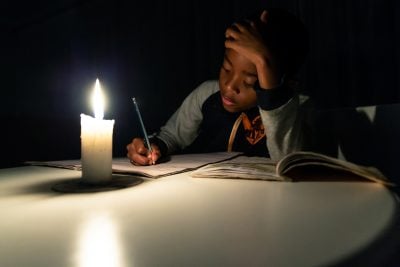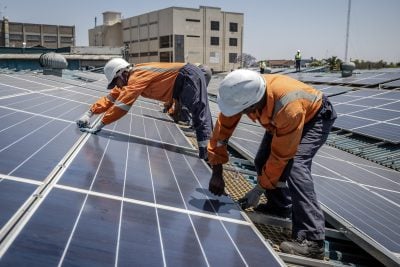African power utilities have long been in a difficult position. They are expected to maintain supplies to rapidly growing populations while extending limited power grids. Many face growing competition from independent power producers (IPPs) while being tasked with hitting government targets in a way that private generators are not. Yet they have to undertake these tasks while tariff increases are strictly limited by government.
Over the past three decades, some African governments have sought to weaken the monopolies of state power companies to improve power supply, particularly by unbundling utilities into their constituent generation, transmission and distribution parts. Such policies are usually designed to attract private sector investment and engender competition but in some cases they can result in the dissolution of utilities.
Unbundling is necessary if genuine competition is to be achieved as it removes conflicts of interest where IPPs have to compete in generation with the state utility but then rely on that utility for transmission, distribution, and even adjudication if it also acts as industry regulator. Most unbundling strategies result in a single transmission operator, often still state owned, with competition in both generation and distribution, particularly the former.
A competitive market in generation can drive down costs, both in construction and operations & maintenance (O&M), while it also has the potential to promote technology and skills transfer. At the same time, an independent regulator is usually set up to oversee competition and tariff regimes, which can often otherwise be influenced by government.
The different models
About a third of all African power sectors remain dominated by vertically integrated utilities, including those in Chad, Democratic Republic of Congo, Equatorial Guinea and Liberia. However, governments with many other calls on their limited financial resources are generally unable to finance infrastructure improvements without private sector participation. About another third have retained vertical integration – where the utility dominates generation, transmission and distribution – but with competition in generation, such as in Botswana, Mauritius, Rwanda and Tanzania.
A third group has vertically unbundled without private sector participation, including Ethiopia, Lesotho and Sudan. Finally, some have vertically unbundled with private sector participation, such as Angola, Ghana, Nigeria and Zimbabwe. Some of this final group, such as Nigeria, seem to have highly competitive and deregulated markets but the benefits are not easily apparent.
Unbundling can indeed create more competition in the sector but it rarely helps to address one of the main problems that affected the performance of state power companies in the first place – a lack of investment. Aside from IPPs, the majority of power utilities operating in Africa are still state owned even where deregulation and unbundling policies have been pursued.
There have been concerns in some African markets that IPPs have been offered overgenerous terms. In Kenya, for instance, it has been claimed that private producers have been paid twice as much for electricity as state utility KenGen, with government officials fired as a result. Utilities in Kenya, South Africa and Ghana have tried to bypass contractual agreements by reducing their offtake from IPPs during downturns in demand, particularly during the early months of the Covid crisis. Demand fell in South Africa by as much as 11 GW, as many mines and industrial firms halted operations.
Where it is difficult for state owned utilities to boost revenue within their domestic markets, growing cross-border power sector integration offers opportunities to target more customers, although progress in developing regional power pools has been slow. The South African Power Pool is the most successful to date, but planned upgrades to the East African and West African power pools have been repeatedly delayed.
Nigeria and Kenya
Few countries have embraced unbundling quite as enthusiastically as Nigeria. The country had long been famed for the poor performance of its power sector, with customers routinely renaming the National Electric Power Authority (NEPA) ‘Never Expect Power Again’. The lack of generating capacity, limited progress on grid expansion and frequent power cuts prompted the government to rename it the Power Holding Company of Nigeria (PHCN) in 2005 in preparation for unbundling into 18 successor companies: six generation companies that now compete with IPPs, one transmission company and eleven distribution firms. The transmission company remained state owned but all of the others had been at least partly privatised by the end of 2014.
This competitive structure could prove a success in the long-term but ongoing problems in supplying gas to thermal plants and a lack of finance for downstream upgrades mean that Africa’s most populous nation still has insufficient generating capacity and unreliable supplies. Security issues surrounding gas supply make it difficult to assess the impact of the reforms on generation levels, as a large but fluctuating proportion of thermal capacity is constantly shut-in.
Kenya has also already unbundled its power sector, although to a far more limited extent. In 1997, the Kenya Power Company was broken up into Kenya Electricity Generating Company (KenGen) and Kenya Power and Lighting Company (Kenya Power), with the latter taking responsibility for transmission and distribution. Both have been partly privatised to bring in much needed investment. Kenya Power has struggled to maintain power supplies in recent years because of rising demand and more recently the collapse of a hydro dam.
There have been three nationwide blackouts since 2018, the most recent in January 2022. Sabotage has been blamed by some, following the dismissal of a number of power sector officials after the government found irregularities in the drafting of PPAs deemed to be overgenerous. The case highlights the fact that deregulation only works if the terms of private sector contracts are correctly calibrated.
In the case of Kenya, PPAs seem to disadvantage both of the main utilities, with KenGen not receiving the same level of payment as its competitors and Kenya Power overpaying for electricity. While the renewables revolution has weakened the position of some utilities, KenGen has been able to play a full role. The firm was due to face competition from a planned 1 GW coal-fired plant at Lamu but environmental opposition eventually saw the government cancel that project in 2020. Nairobi has now instituted a target of achieving 100% renewable energy production by 2030, including hydro, utilising the country’s solar, wind and geothermal resources as well as its existing hydro schemes.
South Africa
Given the problems that have affected unbundled power sectors, it is perhaps not surprising that many governments have opted not to follow the lead of Kenya and Nigeria. Apart from some limited participation by IPPs, the government of South Africa continued to rely on power utility Eskom, even in the face of serious power supply problems, with the support of the country’s powerful trades union movement, which opposes privatisation and deregulation.
The government itself was partly to blame for the shortfall in generating capacity as it underestimated how much new generation capacity would be required. The development of two big new coal-fired projects was sanctioned, the 4.8 GW Kusile and Medupi plants, but both took years longer to build than expected with big cost overruns.
The parastatal’s debts, which now stand at R392bn ($25.8bn), began to affect the entire country’s credit rating, given the government’s role as guarantor. It had begun to mount despite average annual increases in electricity tariffs of 14.73% from 2008 until just before the Covid crisis. The company failed to balance its books despite injections of finance by the government, most recently for R21.9bn ($1.5bn) in the 2022 national budget allocation. In February 2019, the Department of Public Enterprises described the utility as “technically insolvent”. Finally, Eskom became caught up in the corruption, or state capture, cases that have dominated South African politics over the past few years.
Pretoria previously tried to attract private sector investment in power generation, while still leaving Eskom in a dominant position. Renewable energy investors were allowed to develop solar and wind power projects under the government’s Renewable Energy Independent Power Producer Procurement Programme (REIPPP). Power was to be supplied to the national grid under long term power purchase agreements (PPAs) with Eskom but Eskom refused to sign PPAs with some of the selected bidders in 2017-18, leading to delays in launching more tender rounds. This stance may have steeled the government in its determination to act.
Eskom’s inability to solve its power supply problems and its growing debts finally pushed Pretoria into action. In 2019, one year after coming to power, President Cyril Ramaphosa announced that Eskom would be unbundled into three wholly owned entities covering generation, transmission and distribution. Functional separation was completed in 2020 with the establishment of divisional boards and managing directors, with all three now functioning relatively independently. Legal Separation is scheduled for completion by the end of 2022.
The government is considering taking over Eskom’s massive debts or at least part of them as the successor companies will be unable to operate effectively with this drag on their finances. Moreover, it would be difficult to decide how to apportion the debt among the three new companies.
Eskom’s dominant position has also been weakened by the South African government’s decision in 2020 to relax restrictions on self-generation, which will result in more mines developing their own power projects to satisfy their needs and supplying excess production to the national grid. Solar capacity is likely to dominate as miners seek to reduce their greenhouse gas emissions where possible. The growing trend of self generation could also threaten the position of utilities elsewhere on the continent.
The state owned utility’s position could also be threatened in the longer term by a move away from coal, given that coal-fired plants comprise most of its 44 GW installed capacity. South Africa has been reluctant to move away from coal because of the jobs and revenue it generates from mining, consumption and exports but Eskom will gradually have to embrace renewables more fully if it is not to lose out entirely to new competitors. However, the firm’s new generation offshoot will be able to compete on an equal basis with IPPs and will be able to bid in future renewable energy tenders.
South Africa introduced a carbon tax in June 2019, with a rate of R144 ($9)/ton for 2022, and the rate is to increase by at least $1/ton every year until it reaches $20/ton, with a target of $30/ton by 2030 and $120/ton from 2050. These rates are low by international standards, which were generally in the range of $40-80/ton in 2020.
The government is banking on renewables to drive private sector participation in the industry, with 1,600 MW of new wind power capacity, 1,000 MW of solar and 513 MW of storage officially due for completion by December 2022 but realistically expected by 2024 at the earliest. Another 2,600 MW of private sector wind and solar and 750 MW of new coal capacity is due to come on stream by 2023 but this too will be delayed as site selection and tenders are still ongoing.
Want to continue reading? Subscribe today.
You've read all your free articles for this month! Subscribe now to enjoy full access to our content.
Digital Monthly
£8.00 / month
Receive full unlimited access to our articles, opinions, podcasts and more.
Digital Yearly
£70.00 / year
Our best value offer - save £26 and gain access to all of our digital content for an entire year!
 Sign in with Google
Sign in with Google 



